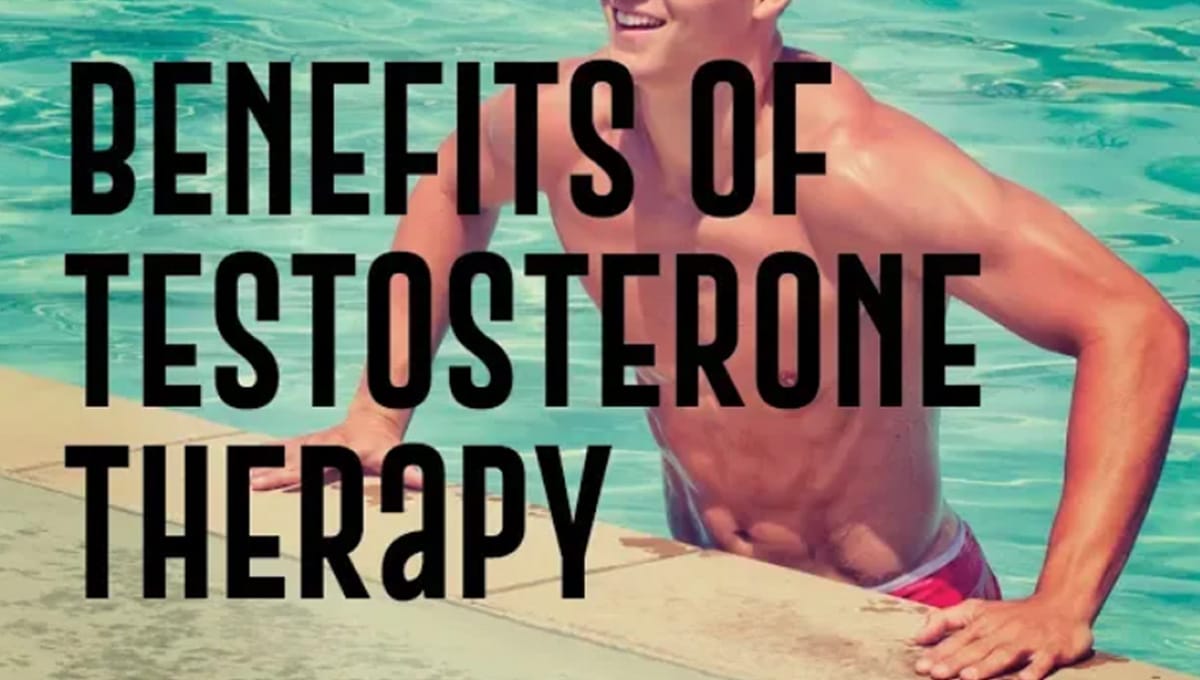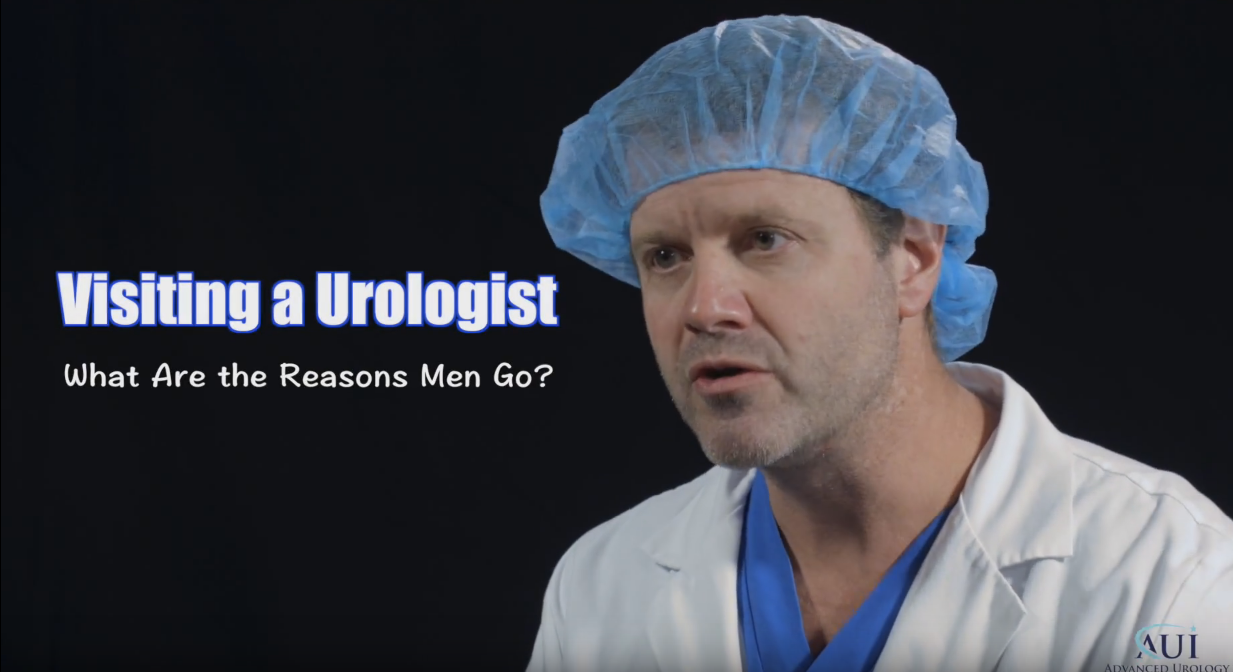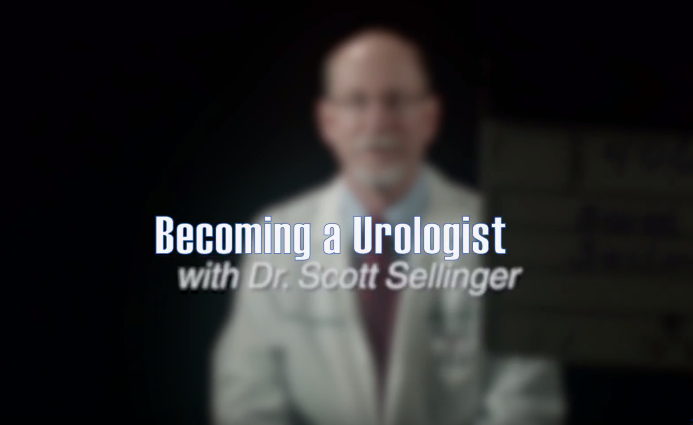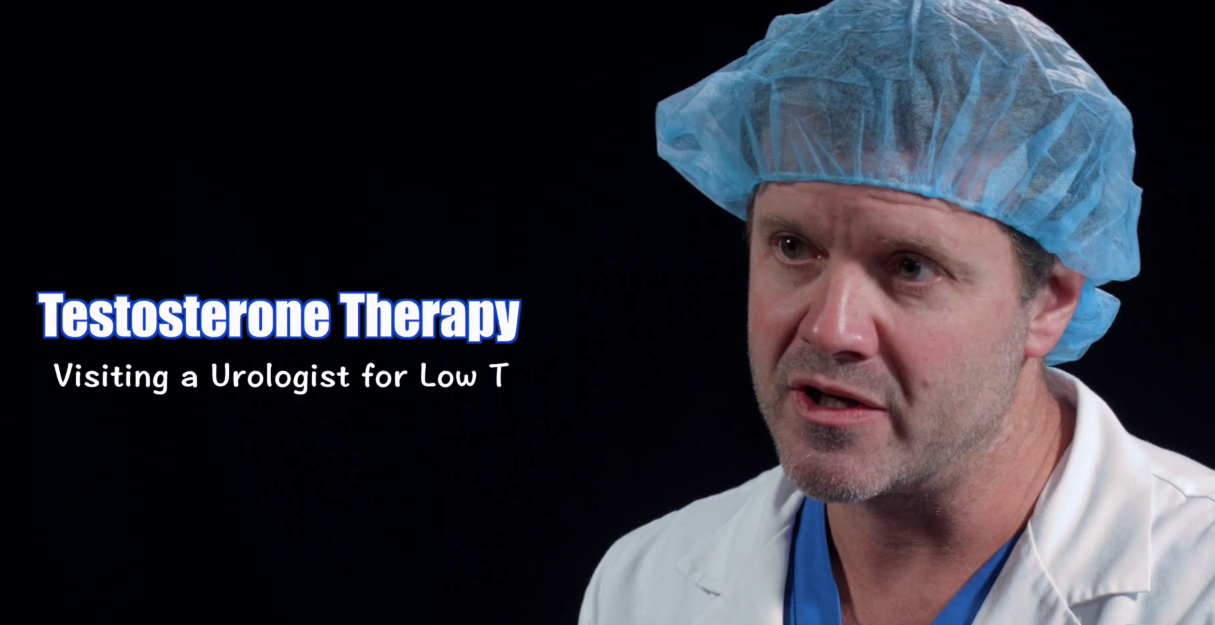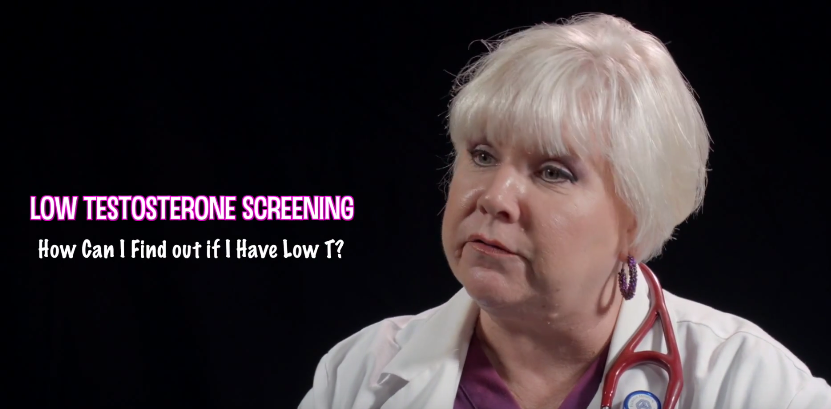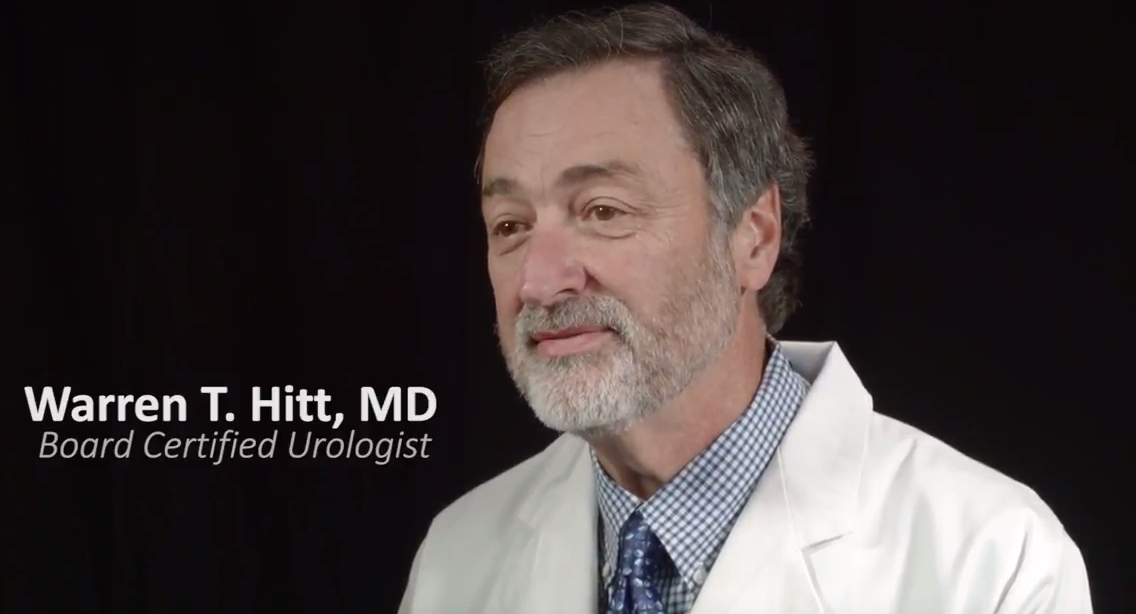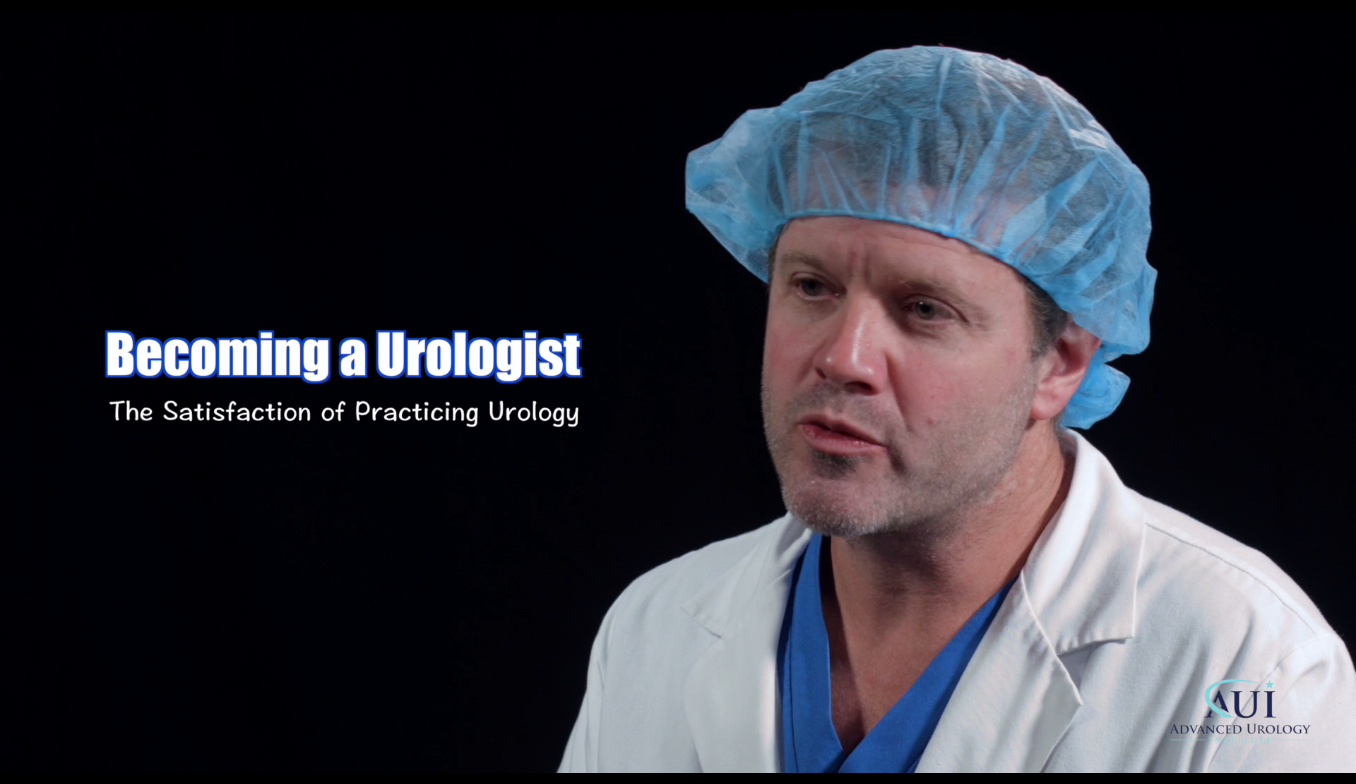Dr. M. Scott Klavans, a board-certified urologist in Largo, FL has observed many patients continue to ignore the symptoms of low testosterone
Continue readingWhat are the Symptoms & Treatment Options for Low Testosterone, According to Dr. Amar Raval?
Low Testosterone Treatment Options
 My name is Brian Hale. I’m a board certified urologist working with Advanced Urology Institute.
My name is Brian Hale. I’m a board certified urologist working with Advanced Urology Institute.
Men with low testosterone are often treated in our practice, and we have several options in treating it: We have injections that we do every two to three (2-3) weeks, and we also have gels that they can put on their skin every morning to raise their testosterone levels back to normal levels. We even have pellets we put on the skin of some patients that we do every four (4) months. We have different options depending on what the patient wants done.
If you are in need of a consultation or have any questions, visit us at our Tampa, FL office or call us at (813) 749-0820.
Symptoms and Treatment of Low Testosterone
The level of testosterone hormone in the body naturally declines as a man grows older. In fact, up to 40% of all men aged 45 years and older experience the effects of low testosterone. The symptoms of low testosterone may appear even earlier in some men.
Also called hypogonadism or low-T, low testosterone is characterized by a variety of symptoms such as:
- Low libido (decreased sex drive)
- Fatigue and lethargy
- Erectile dysfunction (impotence)
- Reduced testicle size
- Breast growth in men (gynecomastia)
- Loss of body and facial hair
- Muscle weakness
- Thinning of bones (osteoporosis)
- Moodiness, irritability and depression
- Decreased sense of well-being
- Increased body fat or reduced muscle mass
- Difficulties in concentration
- Memory loss and sleep disturbances
- Decreased hemoglobin level and mild anemia
- Skin changes such as fine wrinkles
- Diagnosis of low testosterone
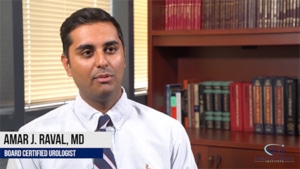 Low-T is diagnosed by measuring the quantity of testosterone in the blood. To clearly assess the level of testosterone, a urologist will request blood tests for both total testosterone and free testosterone. Often, it takes several measurements to confirm that a man has low-T because the levels tend to change throughout the day, with the highest levels occurring in the morning. Testosterone levels are also affected by body mass index (BMI), alcohol consumption, nutrition, age, illness and certain medications. Additional tests for sex hormones such as follicle stimulating hormone (FSH) and luteinizing hormone (LH) may also be requested by the urologist for a better picture.
Low-T is diagnosed by measuring the quantity of testosterone in the blood. To clearly assess the level of testosterone, a urologist will request blood tests for both total testosterone and free testosterone. Often, it takes several measurements to confirm that a man has low-T because the levels tend to change throughout the day, with the highest levels occurring in the morning. Testosterone levels are also affected by body mass index (BMI), alcohol consumption, nutrition, age, illness and certain medications. Additional tests for sex hormones such as follicle stimulating hormone (FSH) and luteinizing hormone (LH) may also be requested by the urologist for a better picture.
Treatment of Low Testosterone
If low-T is diagnosed, the missing hormones may be replaced through hormone replacement therapy, restoring the body’s testosterone levels to normal. In some cases, however, particularly when low-T is diagnosed but no troublesome symptoms are noted, the urologist may not administer any treatment.
For men with bothersome symptoms, the therapy is administered to remove the symptoms and associated sexual problems. Testosterone replacement therapy can be given in different forms and the urologist will discuss options with the patient before deciding on the most appropriate method. After the treatment begins, testosterone levels are monitored to ensure the most effective dose is given.
The different ways of administering testosterone include:
- Injections – The urologist gives regular injections deep into a muscle (intramuscular injection) every 2-3 weeks to 3 months depending on the type of injection chosen. When appropriate, the urologist may delegate the task of injecting testosterone to a nurse or teach the patient how to self-inject. When done correctly, the injections are not painful.
- Testosterone Implants – Cylindrical pellets are inserted into the abdomen, thigh or buttock by the urologist under local anesthetic, once every 3-6 months.
- Testosterone Patches – Used every day and applied on different areas of the body, including arms, back, buttocks and abdomen, the patches work similarly to nicotine patches used by people trying to quit smoking. They deliver testosterone hormone gradually through the skin.
- Testosterone Gel – These gels are applied to clean dry skin, usually on the arm, shoulder, back or abdomen. They should be applied after showering to prevent the gel from washing off too quickly.
There are several benefits that can be derived from testosterone replacement therapy. They include:
- Improved sexual function
- Enhanced mental sharpness
- Increased bone density and protection against osteoporosis
- Increased muscle mass and loss of body fat
- Greater strength and improved physical performance
- Enhanced mood and better sense of well-being
Are you experiencing any bothersome symptoms and suspect you could be having low testosterone? Speak with your doctor as soon as possible about the problem. You do not have to live with these symptoms when effective treatment is available. For more information about testosterone replacement therapy, visit the Advanced Urology Institute website.
What is the impact of low testosterone on men according to Dr. Samuel Lawindy?
Benefits of Testosterone Therapy
Secreted primarily in the testicles, testosterone is a critical hormone responsible for male growth and masculine characteristics. The levels of testosterone increase exponentially in childhood and hit a peak during adolescence, then begin to decline by about 1 percent every year between the ages of 30 and 40 years and older. The gradual decline can be due to either normal aging processes or a condition called hypogonadism. Hypogonadism is a disorder in which the body fails to produce normal quantities of testosterone. It often occurs when there is a problem with the pituitary gland (which controls the testicles) or with the testicles themselves. For men with testosterone levels below the normal range, testosterone replacement therapy can relieve symptoms of low-T and provide many benefits.
Normal Testosterone Levels
For men, the normal range of total testosterone is 300-1,200 ng/dL (nanograms per deciliter). Men with testosterone levels within this range rarely have any problems associated with low testosterone. However, since total testosterone does not usually provide the full picture, doctors often measure and use the levels of free testosterone to assess a man’s vulnerability to low-T symptoms. Free testosterone means the amount of testosterone hormone that is active in the body at any given time. Men with total testosterone levels within the normal range can still suffer from the classic low-T symptoms if their free testosterone levels fall short.
Implications of Low Free Testosterone
The free testosterone level is a clearer indicator of a man’s true testosterone status. In fact, low free-T is almost exclusively associated with sex difficulties. Low testosterone diminishes sex drive in men and results in loss of energy and motivation and poor performance in bed. Men with low testosterone also may suffer from fewer spontaneous erections, slightly lower sperm count, increased body fat, decreased muscle strength and mass, fragile bones, tenderness or swelling of breast tissue, hot flashes, increased fatigue, feelings of depression and sadness, trouble with concentration and memory, lowered self-confidence and motivation, and a degraded overall sense of well-being. These symptoms can be relieved through testosterone replacement therapy.
Benefits of Testosterone Replacement Therapy
There is no doubt that testosterone replacement therapy (TRT) can quickly revive a man’s interest in sex, boost his ability to maintain an erection and recreate the “wow” factor of his orgasms. Treating sexual symptoms is a good enough reason for men to start testosterone therapy. But because testosterone therapy also can improve a man’s health beyond the bedroom, bringing testosterone levels back to normal is a good decision for every man who wants to feel better. Replacement therapy improves bone mineral density, boosts overall bone strength, increases muscle mass and strength, boosts red blood cell production, enhances hemoglobin levels and corrects both iron deficiency anemia and unexplained anemia. Testosterone therapy also improves mood, alleviates depression, irritability and fatigue, relieves disorders linked to testosterone deficiency such as osteoporosis and boosts insulin sensitivity, which can benefit men with diabetes or minimize the risk of diabetes in men with functioning pancreas.
Should You Opt For Testosterone Therapy?
Testosterone replacement therapy is ideal for men with testosterone levels below 300 ng/dL or those experiencing symptoms of low testosterone. Undergoing replacement therapy can help you restore your testosterone levels to normal and improve your libido, cognition, mood, bone density, muscle mass and red blood cell production. However, you should remember that the therapy is only necessary if you have low T. If you are not sure whether the therapy is right for you, speak with your doctor. The doctor will conduct the requisite tests for low-T and guide you accordingly.
At Advanced Urology Institute, we help men recover from their old, tired and depressed selves through safe and effective testosterone replacement therapy. We deliver this therapy after accurate measurements of testosterone levels to ensure that we give testosterone only to the right people. If you have symptoms of low-T or suspect that your levels could be low, speak to one of our urologists. We will ensure to get you back to a more energetic, motivated and happy self. For more information on the diagnosis and treatment for low testosterone, visit the “Advanced Urology Institute” site.
Signs and Symptoms of Low Testosterone
Low testosterone (hypogonadism) is increasingly becoming a serious health concern for men. More men are being diagnosed with the condition, with studies indicating that 4 out of 10 men who are 45 and older have low testosterone (low-T). Likewise, 25 percent of men between 30 and 79 have low-T while about 50 percent of men over 80 have the condition. In fact, low testosterone is so common in men of various ages that numerous TV commercials have been created to make money promoting low-T solutions.
So what is low testosterone?
Also known as Testosterone Deficiency (TD), low-T refers to abnormal blood levels of the male hormone testosterone. The condition is characterized by testosterone levels below 300 ng/dl (nanograms per deciliter) in male patients when the measurement is done correctly. While low-T problems primarily occur in adult males, they are not restricted to male adults. However, when the condition occurs in women and young men, its definition and characterization are slightly different and less clear than for male adults.
Symptoms of low testosterone
Although the symptoms of low-T may differ from one man to another, the most common sexual signs are fewer and weaker erections and reduced sex drive, while non-sexual indicators are depression, low iron levels, increased fat around the waist and lack of energy. Other symptoms of low-T are reduced lean muscle mass, erectile dysfunction, irritability, absent or reduced orgasm, reduction or loss of facial, armpit or pubic hair, sleep disturbances, reduction in strength, sweating or hot flashes, breast enlargement or discomfort, reduction in testes size and memory reduction. Other signs observed only in tests or by doctor examination include osteoporosis, anemia, increased body fat and absent or reduced sperm production.
Treatment of low testosterone
While there are several options for treating low-T, the right treatment for any patient depends on various factors, including the severity of the symptoms, cause of the condition and the patient’s preferences. For instance, if the low-T is caused by lifestyle, a change of habits such as losing weight may be an effective and natural way to boost testosterone levels. Similarly, testosterone levels can be enhanced through supplementation. For men having bothersome or worrisome symptoms such as depression, testosterone replacement therapy (TRT) applied as a skin gel or a regimen of regular injections can improve testosterone levels and alleviate the symptoms.
At Advanced Urology Institute, we recognize that low testosterone is a common burden on many men. We endeavor to provide viable solutions including the safest and most effective testosterone replacement therapy for the needs of all our patients. Driven by the belief that every patient is unique and may suffer from serious complications if treatment is generalized, we deliver a highly personalized replacement therapy to our patients. We also follow our patients very closely and ensure we give testosterone therapy the right way. For more information on safe and effective treatment of low-T, visit the “Advanced Urology Institute” site.
What are the Symptoms of Low Testosterone
Produced in the testicles (testes), testosterone is the hormone responsible for masculinity and muscular development. It is the hormone that fuels sex drive, creates a deep voice, boosts muscle mass, regulates mood, controls body and facial hair patterns, and regulates bone strength. Testosterone levels usually decrease as men age, with studies showing that a man loses roughly 10 percent of testosterone each decade after reaching the age of 30.
Symptoms of low testosterone levels
Since the reduction in the level of testosterone is typically gradual, the symptoms take longer to occur. Generally, however, about 30 percent of all men will experience symptoms of low testosterone after the age of 50. Andropause is the term used to describe a decrease in the level of testosterone hormone in men. Men experiencing andropause can suffer various symptoms associated with the condition and may be at risk of having other serious health problems like osteoporosis if proper treatment is not administered.
The symptoms of low testosterone include:
- Diminished sexual desire (low libido)
- Problems getting erections or weak erections
- Fatigue and weakness
- Hot flashes
- Irritable moods
- Depression
- Increased body fat
- Loss of muscle mass or strength
Low testosterone can cause various complications or even change a man’s body. For instance, it can lead to obesity, hair loss, muscular atrophy (less muscle mass), softer testicles, smaller testicles, cardiovascular problems, larger breasts and brittle bones (osteoporosis).
Causes of low testosterone
Even though aging is the most frequent cause of low levels of testosterone in men, several other factors may be involved. Common causes of low-T include:
- Kidney disease
- Diabetes
- Testicular injuries
- Liver disease
- COPD (chronic obstructive pulmonary disease)
- Radiation therapy
- Steroid medications
- Pituitary gland disorders
- Chemotherapy
Men also may be tested for low-T if they have very low sex drive, erectile dysfunction, low sperm count, hair loss, reduced muscle mass or osteoporosis. And because the symptoms of low testosterone are not specific, a doctor may want to first rule out other conditions with similar symptoms before treatment.
Treatment of low testosterone
Testosterone replacement is the most common treatment for men having low-T. The therapy is administered to relieve symptoms and improve quality of life. The testosterone used in the replacement therapy is usually available in various preparations, including gels, capsules, skin patches and injections. The doctor will decide if testosterone replacement therapy is appropriate for a patient. For instance, the treatment is not appropriate for men with prostate cancer and breast cancer. Men with an enlarged prostate, liver disease, kidney disease or who are using blood thinners may or may not undergo replacement therapy depending on their medical history.
At Advanced Urology Institute, we have a long history of treating low testosterone. We put the interest and health of our patients first and always discuss with our patients in great length their conditions and medical history before we administer treatment. For more information, visit the “Advanced Urology Institute” site.
Why Is Visiting a Urologist Mandatory For Men Over 40? – Dr. Stephen Weiss
Video: Why Is Visiting a Urologist Mandatory For Men Over 40? – Dr. Stephen Weiss
At age 40, most men worry about hair loss or a bulging waistline, but fewer pay attention to the health risks that come with age. A majority of male urinary and sexual problems are seen in men over a certain age, and the number of prostate cancer cases is rising worldwide at an alarming rate [Read Full Article…]
Becoming a Urologist with Scott B. Sellinger, MD
Video: Becoming a Urologist with Scott B. Sellinger, MD
Scott B. Sellinger, MD is a member of the American Urological Association, and serves on the Board for the Southeastern Section of the American Urological Association [Read Full Article…]
Testosterone Therapy, Visiting a Urologist for Low T – Dr. Stephen Weiss
Video: Testosterone Therapy, Visiting a Urologist for Low T – Dr. Stephen Weiss
Testosterone and related male hormones (called androgens) cause prostate cancer to grow. Therefore, one important tool used at Advanced Urology Institute is hormone therapy. Contact a urologist now to know more about this treatment. [Read Full Article…]
Low Testosterone Screening, How Can I Find out if I Have Low T – Jeanette Lain, PA C
Video: Low Testosterone Screening, How Can I Find out if I Have Low T – Jeanette Lain, PA C
Testosterone is a steroid hormone belonging in the androgen group (males) that is primarily secreted in the testicles. Testosterone is considered to be the primary sex hormone for the male species. Contact a professional now and get treatment for this condition as soon as possible. [Read Full Article…]
Getting to Know The Doctor: Warren T. Hitt, MD
Dr. Warren Hitt’s expertise includes Adult urology, cancer, incontinence, da Vinci robotic surgery, stone disease and erectile dysfunction.[Read Full Article…]
Becoming a Urologist, The Satisfaction of Practicing Urology – Dr. Stephen Weiss
Video: Becoming a Urologist, The Satisfaction of Practicing Urology – Dr. Stephen Weiss
Dr. Weiss received a Bachelor of Science degree in Biochemistry and a Bachelor of Arts degree in English from the University of Iowa in 1989. He completed his medical degree at the University of Iowa School of Medicine in 1994. [Read Full Article…]
Erectile Dysfunction – What Options Are Available?
Video: Erectile Dysfunction – What Options Are Available?
Often, the first thing that brings a patient through our doors is a difficulty with erections. This could be a symptom of another medical problem. [Read Full Article…]



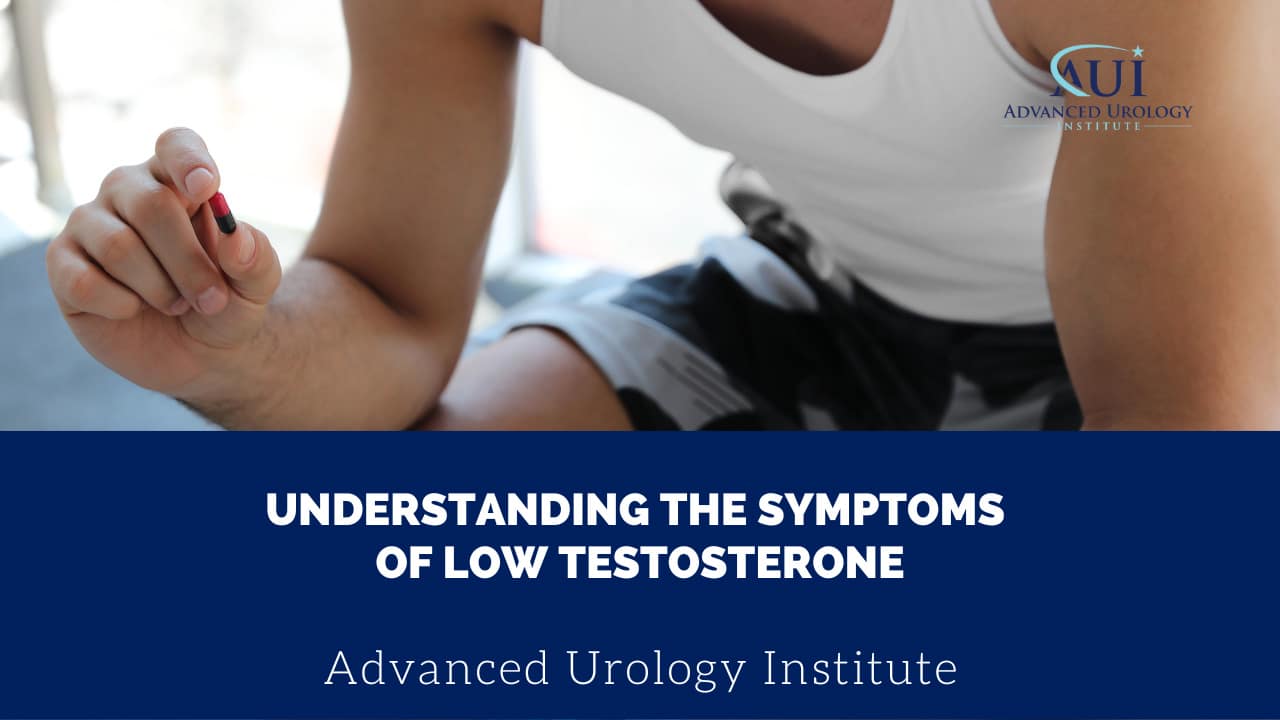
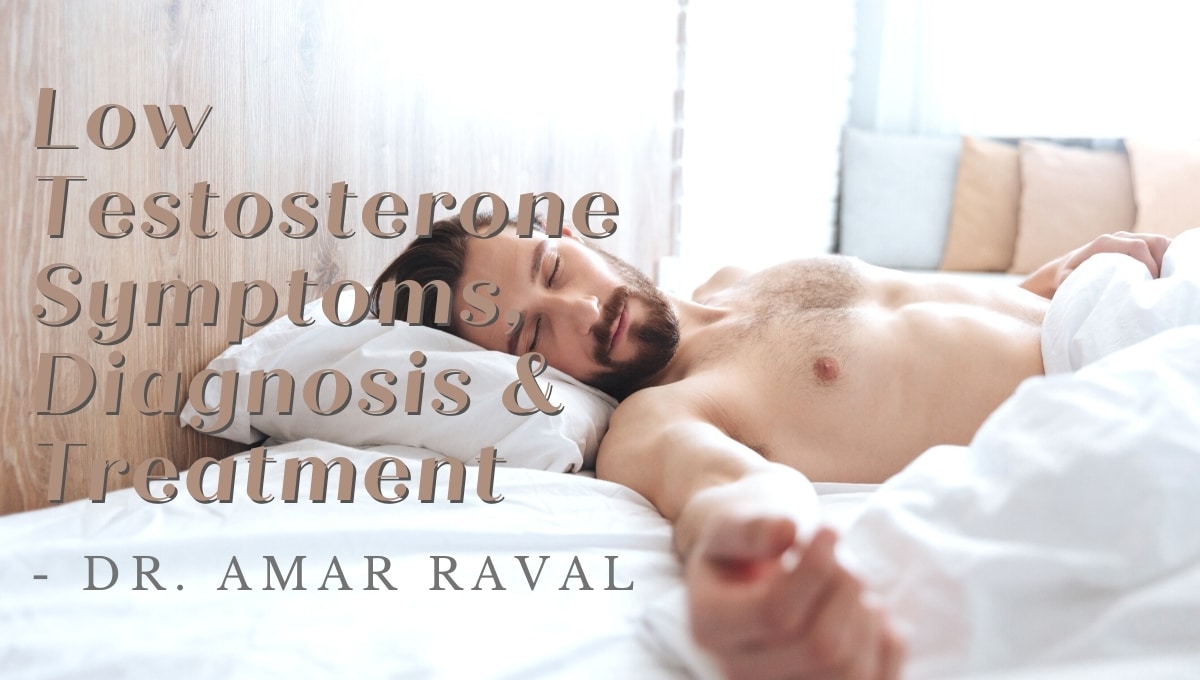
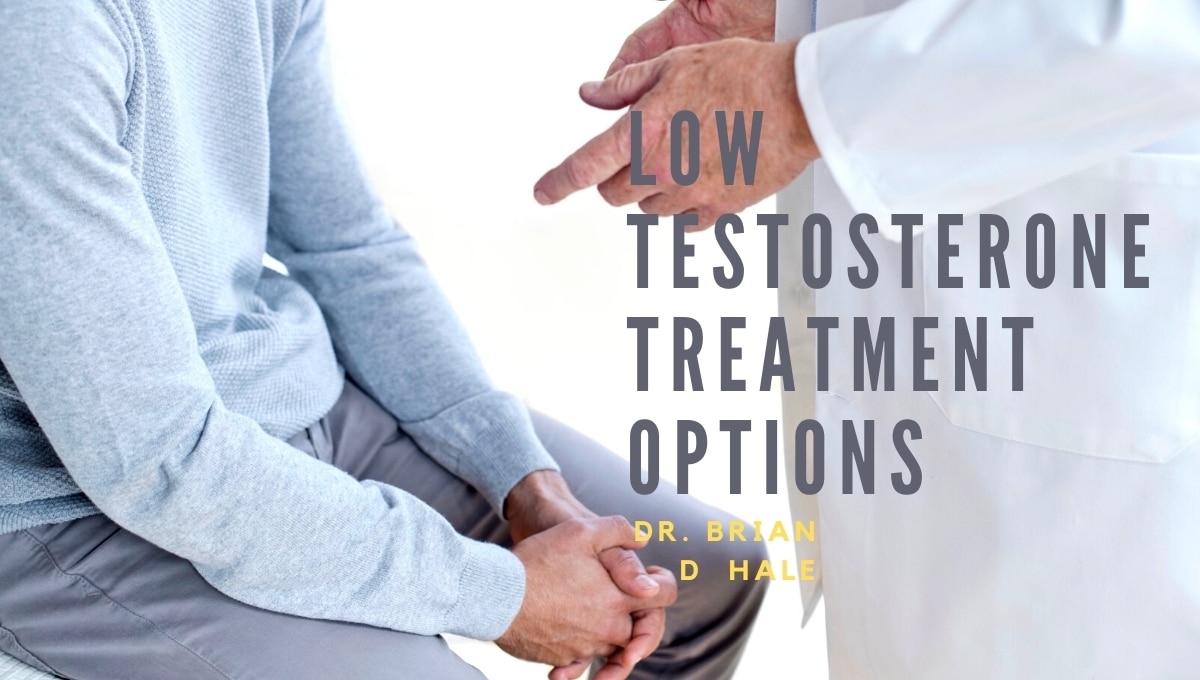
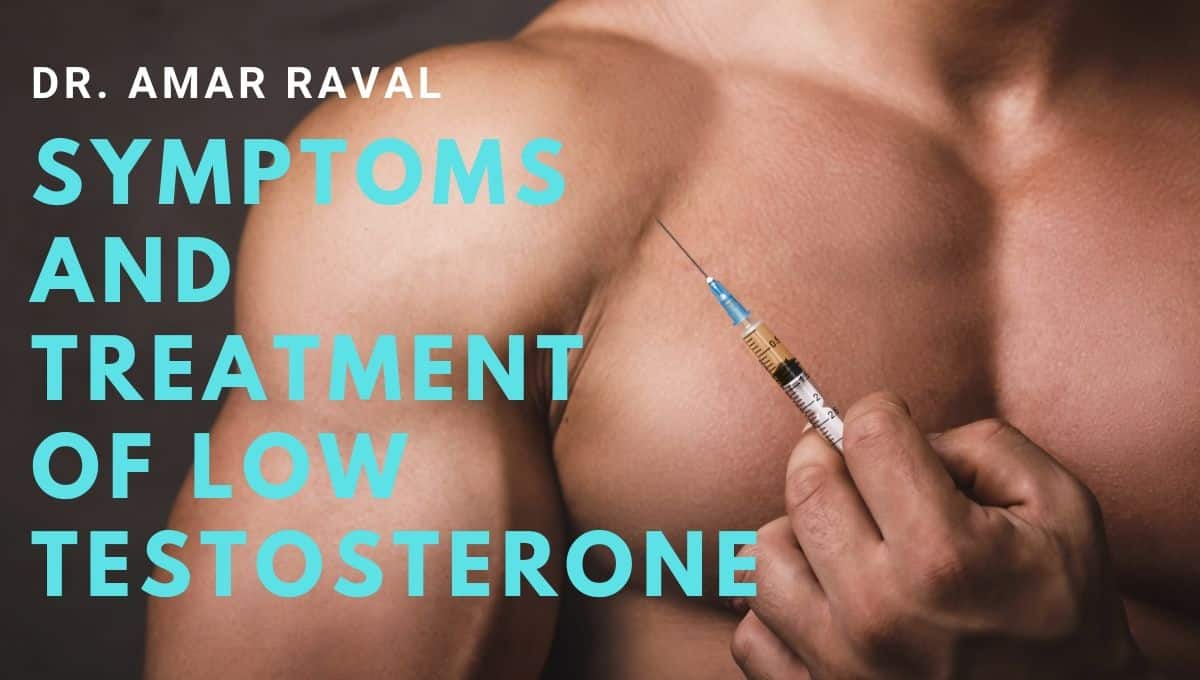
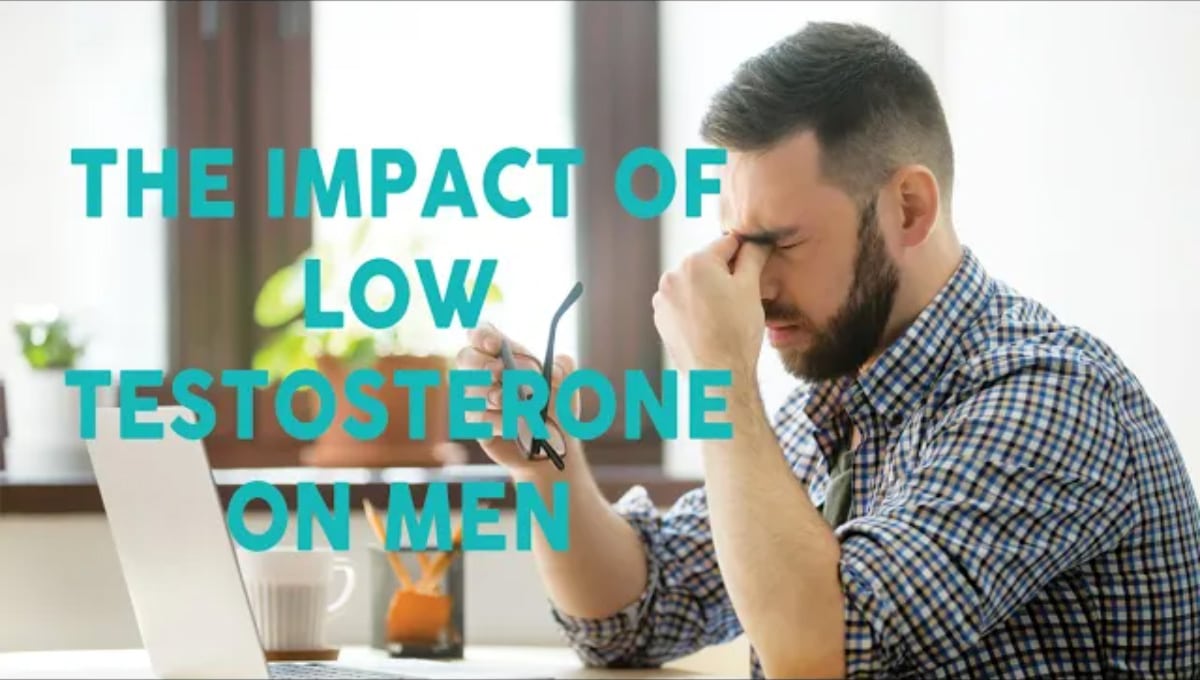
 1. Reduced Sex Drive
1. Reduced Sex Drive